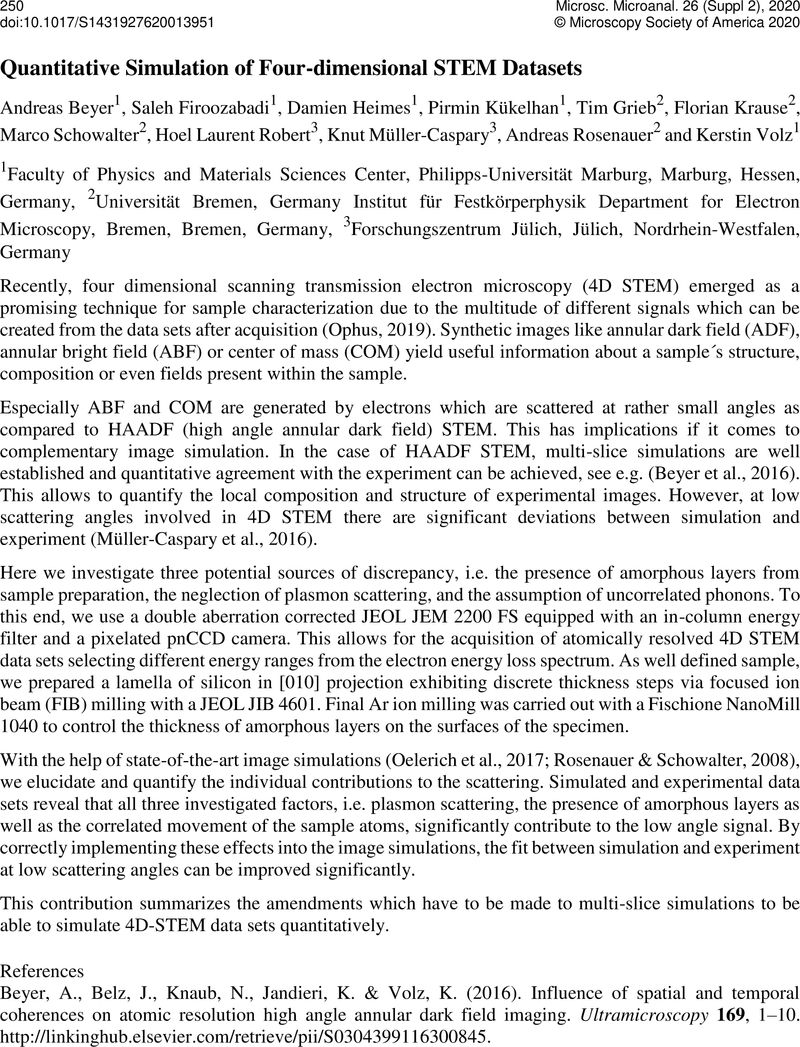No CrossRef data available.
Article contents
Quantitative Simulation of Four-dimensional STEM Datasets
Published online by Cambridge University Press: 30 July 2020
Abstract
An abstract is not available for this content so a preview has been provided. As you have access to this content, a full PDF is available via the ‘Save PDF’ action button.

- Type
- Four-dimensional Scanning Transmission Electron Microscopy (4D-STEM): New Experiments and Data Analyses for Determining Materials Functionality and Biological Structures
- Information
- Copyright
- Copyright © Microscopy Society of America 2020
References
Beyer, A., Belz, J., Knaub, N., Jandieri, K. & Volz, K. (2016). Influence of spatial and temporal coherences on atomic resolution high angle annular dark field imaging. Ultramicroscopy 169, 1–10. http://linkinghub.elsevier.com/retrieve/pii/S0304399116300845.10.1016/j.ultramic.2016.06.006CrossRefGoogle ScholarPubMed
Müller-Caspary, K., Oppermann, O., Grieb, T., Krause, F. F., Rosenauer, A., Schowalter, M., Mehrtens, T., Beyer, A., Volz, K. & Potapov, P. (2016). Materials characterisation by angle-resolved scanning transmission electron microscopy. Scientific Reports 6, 37146. http://www.nature.com/articles/srep37146.10.1038/srep37146CrossRefGoogle ScholarPubMed
Oelerich, J. O., Duschek, L., Belz, J., Beyer, A., Baranovskii, S. D. & Volz, K. (2017). STEMsalabim: A high-performance computing cluster friendly code for scanning transmission electron microscopy image simulations of thin specimens. Ultramicroscopy 177, 91–96. http://linkinghub.elsevier.com/retrieve/pii/S030439911630300X.10.1016/j.ultramic.2017.03.010CrossRefGoogle ScholarPubMed
Ophus, C. (2019). Four-Dimensional Scanning Transmission Electron Microscopy (4D-STEM): From Scanning Nanodiffraction to Ptychography and Beyond. Microscopy and Microanalysis 1–20. https://www.cambridge.org/core/product/identifier/S1431927619000497/type/journal_article.Google ScholarPubMed
Rosenauer, A. & Schowalter, M. (2008). STEMSIM - A New Software Tool for Simulation of STEM. Microscopy of Semiconducting Materials 2007 120, 170–172. http://www.springerlink.com/index/j2344u6684318134.pdf (Accessed December 8, 2011).10.1007/978-1-4020-8615-1_36CrossRefGoogle Scholar



